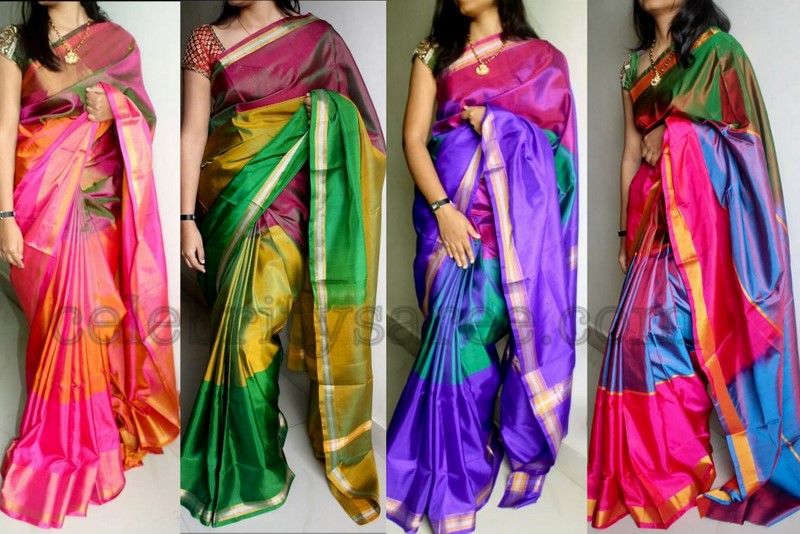
Uppada Silk
Uppada Silk is named after a small beach town of Uppada in East Godavari district of Andhra Pradesh, India. Also known as Uppada Pattu (Silk in Telugu), Uppada Silk sarees are made from the age old Jamdani method.
Known for the unique designs in them, Uppada sarees are usually made with Cotton warp. Using only non-mechanical techniques, Uppada Silk sarees are defined by the length and breadth count of threads. The artisans also use a lot of zari work in the exquisite designs of Uppada Silk sarees.
Origin and History
To understand the history of Uppada Silk, one has to first trace the journey of the Jamdani weaving technique. After a decline in the 19th century due to the industrial revolution in England, Jamdani saw a slow resurgence in the 20th century.
Thereafter, the technique of Jamdani was introduced in Uppada in the year 1988 where it incorporated designs which were closely identified with Andhra Pradesh. This led to the birth of a new design range called the Uppada Silk sarees. However it still took about ten years for the Uppada Silk sarees to get the due recognition and popularity.
The Making of Uppada Silk
The length count of threads is 100 and the breadth count is 100 in the weaving process of Uppada Silk sarees.
Jamdani made in Uppada has two weavers working on a single loom and weaving delicate and beautiful designs on the fabric by zari work. Since this is an art practiced solely by hands, it takes two painstaking months before a superb piece of work is finished.
Recreating a Jamdani weaving process was extremely difficult in the initial phase, because to familiarize the weavers with the intricate skills of hand weaving took a lot of time. Now the weaving community procure the designs and raw materials and create Jamdani Uppada Silk sarees at their places.
With the glorious look and light weight, Uppada Silk sarees are among the more expensive varieties of Silk sarees in the world.
The average price range of Uppada Silk sarees is between Rs. 5000/- and Rs. 20000/-.
[youtube]http://www.youtube.com/watch?v=IFETwU8-q8Q[/youtube]
Faces behind the Fabric
The person singularly responsible for introducing the Uppada Silk sarees is Mr. Ghanshyam Sarode, a textile designer. He has been known as the revivalist of Indian ethnic fashion, the world over. In Uppada, there is a sole community known as Padmasalis who are engaged in this weaving process.
Also Read: Silk
Wearing the Attire
Given the cost of the sarees, Uppada Silk sarees are used mainly during occasions of weddings, festivals and formal gatherings.
They are usually light in weight, and can be worn quite comfortably throughout the year.
Global Appeal
Uppada Silk sarees are held in great esteem the world over and are seen as one of the foremost contributors to India’s textile chronicles. In fact the Victoria and Albert Museum of London boast of a fantastic collection of Jamdanis including Uppada Silk sarees. Mr. Ghanshyam Sarode, the pioneer of this art, has carried the range of Uppada Silk sarees abroad on numerous occasions to UK, Europe, Hong Kong, Singapore, Dubai and Korea.
By far the biggest success for Uppada Silk sarees has been in USA where Mr. Sarode has conducted four successful shows. Not only in the shows organized by Mr. Sarode, Uppada Silk sarees have a place of their own in almost all silk exhibitions.
Uppada Silk sarees are a preferred choice by cine actresses across the Indian spectrum for formal occasions.
Maintenance
The recommendation for Uppada Silk sarees is that for the first time, only dry cleaning should be done. The second time onwards, a mild detergent can be used. They should never be dried under direct sunlight.
Interesting Facts and Comparisons
- Because of the state of their origin, Uppada Silk sarees are frequently compared to Pochampalli Ikat sarees and kanchipuram Silk sarees.
- The Uppada sarees are known to be almost ‘translucent’
Reference
Categories: Textiles

